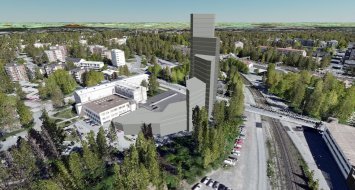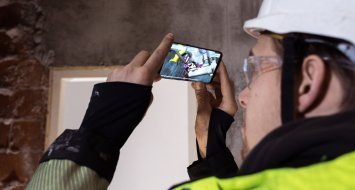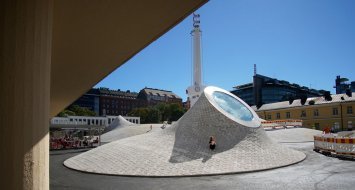Retrofitting new technical systems into an existing building can be tricky. CTRL Reality, a Finnish AR/VR application development company, is completing an experimentation project demonstrating how HVAC design and installation are easier and cost-efficient with the help of virtual reality.
“We did research on the business use of virtual and augmented reality for five years at the University of Turku before starting up our company a year ago,” says CEO Teijo Lehtonen. “We’re focused on industrial and cultural travel applications.”
Recently, CTRL Reality joined forces with the Naavatar industry group, which provides smart, low-temperature pipe network and heat recovery systems for buildings. The group has six members: Alfa Laval, Energianhallinta, Hydrocell, Oilon, Kolmeks, and Siemens. In June 2017, they started with CTRL Reality a government-supported KIRA-digi experimentation project on the use of VR in retrofitting Naavatar HVAC systems.
Design in VR Solves Practical Problems
Replacing an old heating system with an advanced one is not straightforward, despite the energy-saving and environmental benefits. For example, building owners are not sure if all the necessary pipes and components will fit in their existing distribution room.
Mechanics installing the new system are not confident, either. Due to the uncertainties, they add a risk premium on the installation price and reserve excessive inventory of materials for the project. Once the system is in place, the people who will maintain the heating system need training and guidance.
Lehtonen believes that its VR app can solve the problems: “Instead of imagining or guessing how all the components should be installed, we can visualize it with actual dimensions in VR. E.g., with photogrammetry, we model the existing room in 3D, remove the old equipment from the model, and retain all the necessary features like walls, doors, platforms, and connection points.”
With an accurate model, the designer can start creating the new system in 3D, standing inside the virtual distribution room. Previously, an experienced designer would have only done this mentally, as Lehtonen has learned.
“VR is more than just seeing; it’s about experiencing the space immersively,” he adds.
Concrete Benefits
Now, it is easy to see how all the pipes and components fit perfectly and if enough space is available to operate and maintain the equipment. There is not a risk of designing intersecting pipes, as can happen if you draw in 2D. In addition, you can see if the doors are wide enough for bringing in the devices.
“VR has been used to visualize a completed design. What makes our solution unique is that design happens in the real space,” Lehtonen points out. “You don’t have to fix errors on the site, which can be expensive, especially if you have to take apart something that you’ve already installed.”
Using an accurate model also saves costs during construction. The software outputs a precise bill of materials, so waste is minimized. Installation is fast as it has already been figured out in the virtual model. The mechanic gets the virtual model and traditional drawings, but also 360-degree photos and videos of the model that can be viewed on a mobile device.
The Naavatar group vendors have 3D models of their equipment, and the models make up the design library for CTRL Reality’s app. The designer draws the pipework “in the air” using a selection of pipes of varying dimensions and insulation.
“Our software is not a full-blown BIM application. It is a VR app for designing a specific system in an existing space,” Lehtonen reminds.
For maintenance training, CTRL Reality can either record videos of the model or let a virtual coach show how it is done. Vendors include maintenance and operational instructions in the model. In the future, it will be possible to display real-time IoT data on the model, as the company has already done in industrial applications.
“Without KIRA-digi, this project would not have materialized,” says Lehtonen. “Once the experimentation is completed in October of 2018, we intend to start selling the software and the supporting cloud service to designers, hardware vendors, and contractors. Our solution has already created buzz internationally, especially in Denmark where we have a sales representative.”
Photos: Courtesy of CTRL Reality
Text: Aarni Heiskanen, AE Partners Ltd
Other news

The Winning Teams at the AEC Hackathon Helsinki
The AEC Hackathon on September 7-9, 2018, was a part of Housing Fair Finland’s City Living...

City Development with Interactive 3D Models
The Finnish city of Hyvinkää has developed a unique internet service for collaborative 3D ...

BIM Meets Reality on the Construction Site
BIM models are mostly used by foremen on construction sites. But what if they could be mad...

How BIM Can Serve Building Owners
Building Information Models typically end their active life after the construction phase. ...

